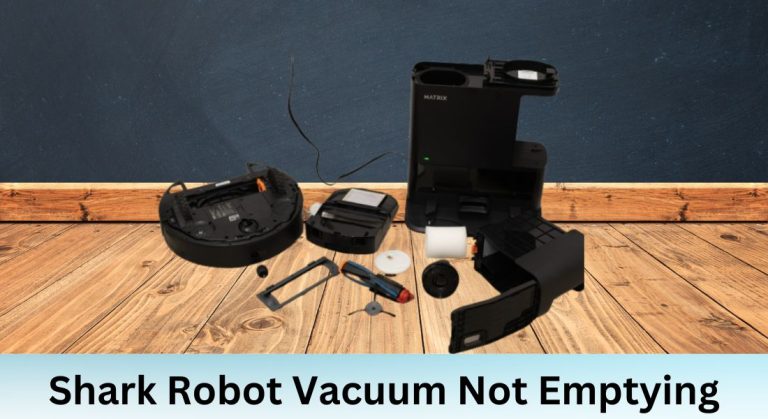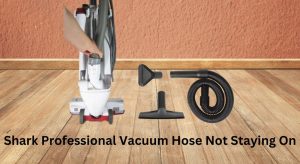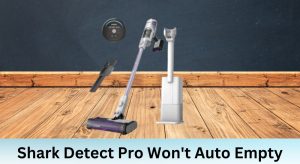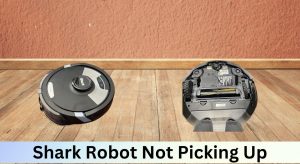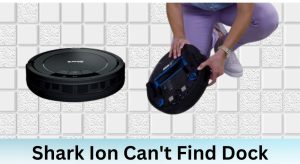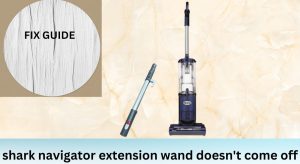Shark robot vacuums are designed to make cleaning effortless, but one common issue users face is the vacuum not emptying properly. This can be frustrating, especially when you rely on the device for consistent performance. Regular maintenance and troubleshooting are essential to keep your Shark robot vacuum functioning at its best. Understanding the system and identifying potential causes can help you resolve the issue quickly.
Table of Contents
The Shark robot vacuum uses a self-emptying system that transfers debris from the onboard dustbin into a larger bin inside the charging base. For this to work smoothly, everything from the vacuum’s internal filters to its dustbin and suction pathway needs to be clean and correctly installed.
Over time, parts like the dustbin or filters can wear down or become clogged, making it harder for debris to transfer properly.

Identifying Potential Causes
Several factors can prevent your Shark robot vacuum from emptying properly. Common causes include:
- Clogged Filters or Dustbin: Dust and debris buildup can block airflow, reducing suction power.
- Blockages in the Vacuum Pathway: Obstructions in the pathway can prevent debris from being transferred to the base.
- Incorrect Dustbin Installation: If the dustbin isn’t properly seated, the vacuum may not empty correctly.
- Software Issues or Outdated Firmware: Glitches or outdated software can interfere with the self-emptying function.
- Physical Obstructions or Debris Buildup: Hair, string, or other debris can accumulate in the vacuum’s components, causing blockages.
Troubleshooting Steps

Follow these steps to troubleshoot and resolve the issue:
Clean the dustbin and filters: Remove and inspect both. If they’re too clogged, try cleaning them gently with a brush or dry cloth. And if they’re beyond saving, replacement Shark filters and bins are inexpensive and easy to install.
Clear out blockages: Look in the suction path, under the brushroll, and around the air inlet. Compressed air can help dislodge stubborn debris.
Check the dustbin fit: Make sure it clicks fully into place and isn’t misaligned.
Update firmware: Use the SharkClean app to install the latest version. Even minor updates can fix hidden bugs.
Advanced Troubleshooting Techniques
If the issue persists, try these advanced methods:
- Check Navigation and Mapping: Ensure the robot’s navigation system is functioning correctly. Reset the mapping if necessary.
- Reset the Robot: Restore the robot to its default settings to clear any errors or glitches.
- Contact Shark Customer Support: If all else fails, reach out to Shark’s support team for further assistance.
Maintenance Tips to Prevent Future Issues

Regular maintenance can prevent your Shark robot vacuum from encountering emptying issues. Here’s what you should do:
- Clean Filters and Dustbin Weekly: Remove dust and debris to maintain optimal airflow and suction.
- Check for Software Updates: Regularly update the vacuum’s firmware to ensure it operates efficiently.
- Inspect the Vacuum Pathway: Remove any blockages or debris buildup to keep the system running smoothly.
- Ensure Proper Dustbin Installation: Always double-check that the dustbin is correctly installed after cleaning.
Best Practices for Optimal Performance
To keep your Shark robot vacuum in top condition:
Never store your Shark in humid areas.
Empty the base’s dust bag before it’s completely full.
If you’re vacuuming extra-dusty areas, clean or swap out your filters more often. You can grab a replacement filter set online here if you need extras.
Additional Resources and Support
If you need further assistance, consider these resources:
- Shark Customer Support: Contact Shark’s support team for expert help.
- Online User Manuals: Access detailed guides and troubleshooting tips.
- Shark Community Forums: Join forums to connect with other users and share solutions.
By following these steps and maintaining your Shark robot vacuum regularly, you can ensure it continues to perform efficiently and keep your home clean.

